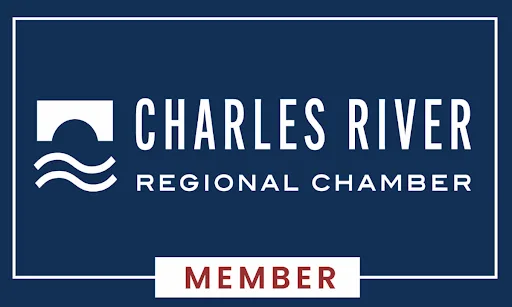How to Manage Pain Without Opioids: A Comprehensive Guide
Clinically Reviewed by Dr. Kate Smith

Pain is a universal experience, but managing it effectively without opioids is particularly crucial in today’s landscape. While opioids like oxycodone, hydrocodone, and fentanyl have been widely prescribed for pain relief, their high potential for addiction and overdose makes exploring non-opioid alternatives essential. For individuals in recovery from opioid addiction, pain management strategies that do not rely on these substances are vital for sustaining sobriety and improving quality of life.
At Greater Boston Addiction Centers, we offer comprehensive care for those seeking relief from chronic or acute pain without the risks associated with opioids. This blog explores the dangers of opioid use, evidence-based non-opioid pain management methods, and the role of professional treatment programs like our opioid addiction treatment and substance abuse treatment programs in fostering a healthier, addiction-free life.
The Risks of Opioid-Based Pain Management
Opioids are highly effective for short-term pain relief, but their long-term use poses significant risks. Understanding these dangers underscores the importance of seeking alternative methods.
1. Addiction and Dependency
Opioids are highly addictive, with regular use often leading to dependency. The brain’s reward system becomes conditioned to crave the euphoric effects of opioids, making it challenging to quit without professional help.
2. Tolerance
Over time, individuals develop tolerance, requiring higher doses to achieve the same level of pain relief. This increases the risk of overdose and intensifies the dependency cycle.
3. Withdrawal Symptoms
Quitting opioids can lead to severe withdrawal symptoms, including nausea, sweating, anxiety, and muscle pain, making it difficult for individuals to stop without support.
4. Overdose Risks
Opioids suppress the respiratory system, and overdoses are often fatal. In 2021 alone, over 80,000 opioid-related deaths were reported in the U.S. (Source: CDC).
5. Side Effects
Long-term opioid use can cause constipation, hormonal imbalances, immune suppression, and cognitive impairment.
Effective Non-Opioid Pain Management Strategies
Managing pain without opioids involves a combination of medical, therapeutic, and lifestyle approaches. These evidence-based methods offer sustainable relief while avoiding the risks associated with opioid use.
1. Physical Therapy
Physical therapy addresses the root causes of pain by improving strength, flexibility, and posture.
- Techniques Used: Stretching exercises, manual therapy, posture correction, and movement retraining.
- Conditions Treated: Chronic back pain, joint pain, post-surgical pain, and injury recovery.
- Benefits: Reduces reliance on medications, restores mobility, and improves overall physical function.
2. Cognitive Behavioral Therapy (CBT)
CBT is a psychological approach that teaches individuals how to manage pain by changing negative thought patterns and emotional responses.
- How It Works: CBT helps patients reframe how they think about pain, reducing its emotional and psychological impact.
- Proven Effectiveness: Research shows CBT can significantly decrease pain severity and improve quality of life for individuals with chronic pain.
3. Acupuncture
Acupuncture is a traditional Chinese medicine practice that stimulates specific points on the body to alleviate pain.
- How It Works: Thin needles are inserted into the skin to release endorphins and improve circulation.
- Conditions Treated: Migraines, arthritis, lower back pain, and fibromyalgia.
- Benefits: Provides natural pain relief without medications.
4. Mindfulness and Meditation
Mindfulness and meditation practices help individuals focus on the present moment, reducing the intensity of pain and associated stress.
- Techniques: Guided meditation, mindfulness exercises, and breathing techniques.
- Proven Benefits: Mindfulness-based stress reduction (MBSR) has been shown to decrease chronic pain intensity and improve emotional well-being.
5. Non-Opioid Medications
Several non-opioid medications can effectively manage pain, depending on its source and severity.
- Examples:
- NSAIDs (ibuprofen, naproxen) for inflammation-related pain.
- Acetaminophen for mild to moderate pain.
- Anticonvulsants (gabapentin) for neuropathic pain.
- Antidepressants (amitriptyline) for chronic pain syndromes.
- Benefits: Lower addiction risk and fewer long-term side effects than opioids.
6. Heat and Cold Therapy
Alternating heat and cold applications can provide immediate relief for various types of pain.
- Cold Therapy: Reduces swelling and numbs acute pain, especially after injuries.
- Heat Therapy: Relaxes tight muscles and improves circulation for chronic pain relief.
- Applications: Use heating pads, ice packs, or warm baths.
7. Chiropractic Care
Chiropractic adjustments focus on restoring joint function and alleviating musculoskeletal pain.
- How It Works: Manual adjustments realign the spine and reduce nerve pressure.
- Conditions Treated: Neck pain, back pain, tension headaches, and sciatica.
- Benefits: Provides drug-free pain relief and improves mobility.
8. Exercise and Movement
Regular physical activity can reduce pain by strengthening muscles, improving circulation, and releasing endorphins.
- Low-Impact Options: Swimming, yoga, tai chi, and walking.
- Chronic Pain Benefits: Reduces stiffness, enhances flexibility, and boosts overall mood.
9. Nutritional Adjustments
A balanced diet rich in anti-inflammatory foods can help reduce chronic pain and promote healing.
- Key Foods: Fatty fish (salmon), leafy greens (spinach), berries, and nuts.
- Hydration: Proper hydration supports muscle recovery and reduces fatigue.
- Supplements: Omega-3 fatty acids, turmeric, and magnesium can help with pain management.
10. Support Groups and Counseling
Pain often has an emotional component that support groups and therapy can address.
- Benefits: Sharing experiences in a group setting reduces feelings of isolation and provides practical coping strategies.
- Counseling: Individual therapy helps process emotions tied to chronic pain.
Pain Management in Addiction Recovery
For individuals recovering from opioid addiction, managing pain without opioids is critical to preventing relapse. This requires a multidisciplinary approach that balances physical relief with emotional support.
1. Integrated Care
At Greater Boston Addiction Centers, we provide holistic care that addresses both pain and addiction, ensuring sustainable recovery.
2. Behavioral Therapy
CBT and other therapies teach coping strategies for managing pain and addressing triggers for substance use.
3. Holistic Therapies
Yoga, mindfulness, and meditation are integrated into our programs to promote relaxation and emotional balance.
4. Medical Oversight
Our medical team collaborates with clients to develop safe, effective pain management plans that align with their recovery goals.
Why Choose Greater Boston Addiction Centers?
At Greater Boston Addiction Centers, we specialize in helping individuals manage pain without opioids. Whether you’re in recovery or seeking alternatives to opioids for chronic pain, our personalized programs are designed to meet your unique needs.
What We Offer:
- Comprehensive Care: From detox to aftercare, we provide a full spectrum of services.
- Personalized Treatment Plans: Tailored to your specific pain management and recovery goals.
- Expert Team: Licensed therapists, medical professionals, and addiction specialists with extensive experience in pain management.
Contact us today at (877) 920-6583 to learn more about our programs and how we can support your journey to pain-free living without opioids.
Benefits of Non-Opioid Pain Management
- Reduced Risk of Addiction: Eliminating opioid use removes the risk of dependency and overdose.
- Sustainable Relief: Many non-opioid methods provide long-term pain management without the need for escalating doses.
- Improved Quality of Life: Non-opioid strategies focus on overall wellness, including physical, emotional, and mental health.
- Support for Recovery: Managing pain without opioids supports sobriety for individuals recovering from addiction.
Conclusion
Managing pain without opioids is not only achievable but also essential for long-term health and well-being. By exploring non-opioid pain management strategies, you can reduce risks associated with opioids and improve your overall quality of life.
At Greater Boston Addiction Centers, we’re here to guide you every step of the way. Whether you’re seeking relief from chronic pain or support for opioid addiction recovery, our team is ready to help. Call us today at (877) 920-6583 to start your journey toward a healthier, pain-free future.
FAQ on How to Manage Pain Without Opioids
Why is it important to manage pain without opioids?
Opioids carry significant risks of addiction, dependency, and overdose. Managing pain without opioids offers safer, long-term solutions for relief without these dangers.
What are some effective non-opioid pain management methods?
Effective methods include physical therapy, cognitive behavioral therapy (CBT), acupuncture, mindfulness, non-opioid medications, heat and cold therapy, and regular exercise.
Can non-opioid methods manage chronic pain effectively?
Yes, many evidence-based non-opioid approaches provide sustainable relief for chronic pain, including physical therapy, mindfulness, and anti-inflammatory diets.
Is non-opioid pain management suitable for everyone?
Non-opioid strategies can benefit most individuals, but treatment plans should be personalized based on the type and severity of pain.
How does mindfulness help with pain management?
Mindfulness helps individuals focus on the present moment, reducing the emotional intensity of pain and improving overall well-being.
Can pain management without opioids support addiction recovery?
Yes, managing pain without opioids is critical for individuals in recovery from addiction, as it helps prevent relapse and promotes long-term sobriety.
What non-opioid medications are available for pain relief?
Non-opioid options include NSAIDs, acetaminophen, anticonvulsants (e.g., gabapentin), and certain antidepressants for neuropathic pain.
What is the role of physical therapy in pain management?
Physical therapy helps address the root causes of pain through exercises, stretching, and manual techniques to improve strength, mobility, and function.
Live Sober
Live Connected
Greater Boston Addiction Centers
Rehab Blog

